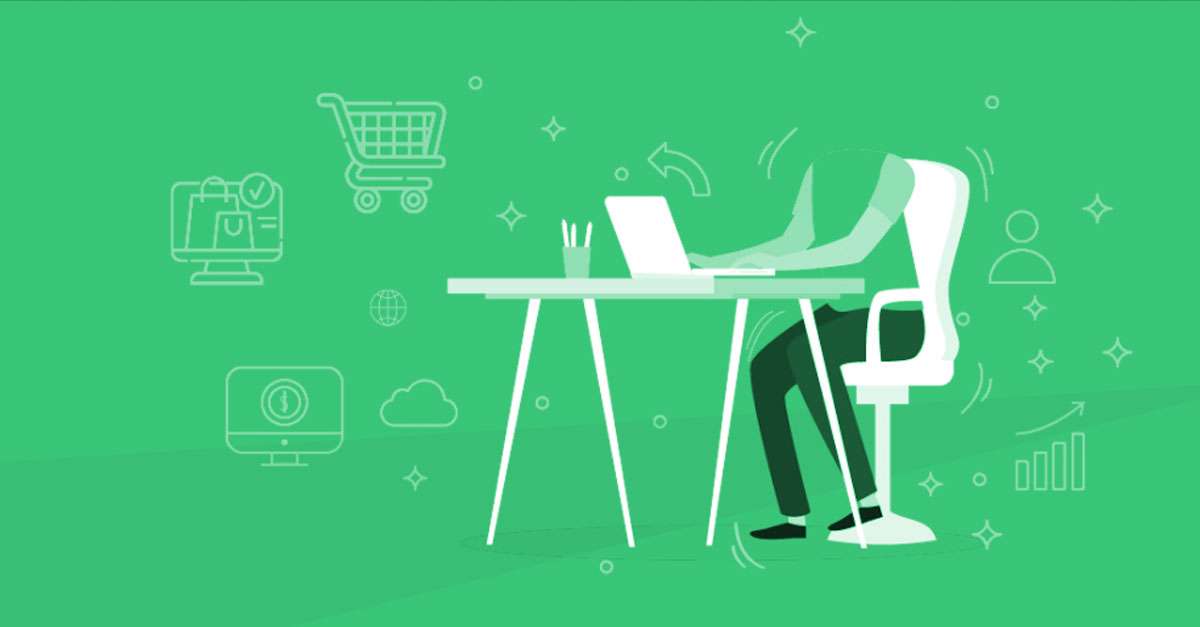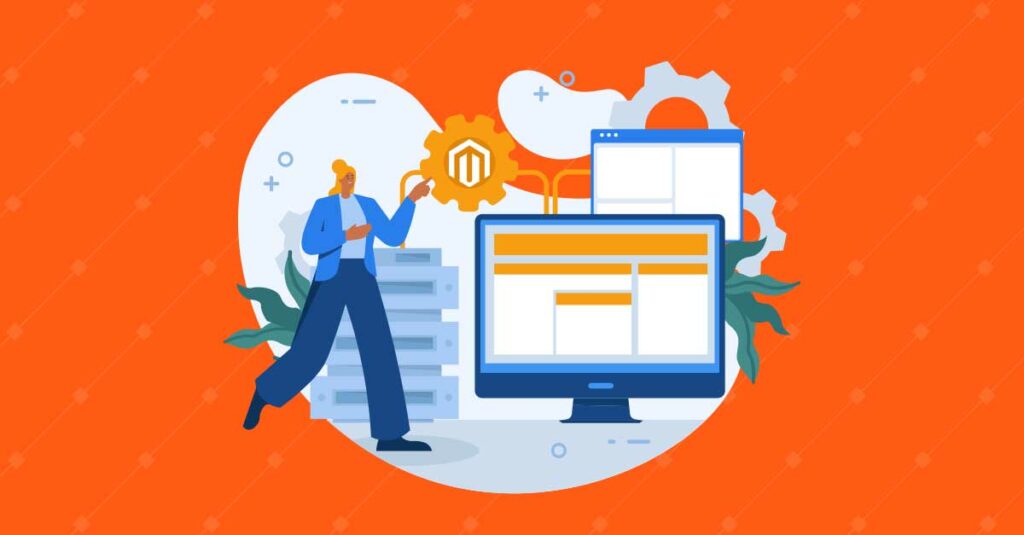Headless commerce is a term used to describe a decoupled approach to commerce. For example, headless CMS delivers the front-end experience, and the eCommerce platform offers back-end commerce. This approach provides the flexibility to deliver a best-in-class commerce experience without being limited by the capabilities of a traditional eCommerce platform. It also allows for a more seamless integration of the commerce functionality into the overall website or application.
As eCommerce platforms continue to grow in popularity, it’s essential to understand the difference between traditional eCommerce platforms and headless eCommerce platforms. The headless commerce approach is becoming increasingly popular as businesses look to move away from traditional eCommerce platforms that can be inflexible and difficult to work with. By decoupling the front-end and back-end, companies can take advantage of the best of both worlds – a flexible, easy-to-use headless CMS for the front-end and a robust eCommerce platform for the back-end.
According to Forbes, funding for headless technologies has increased from $1.65 billion in 2020 to $2021. With more ecommerce businesses trying to keep up with current trends, this number continues to grow.
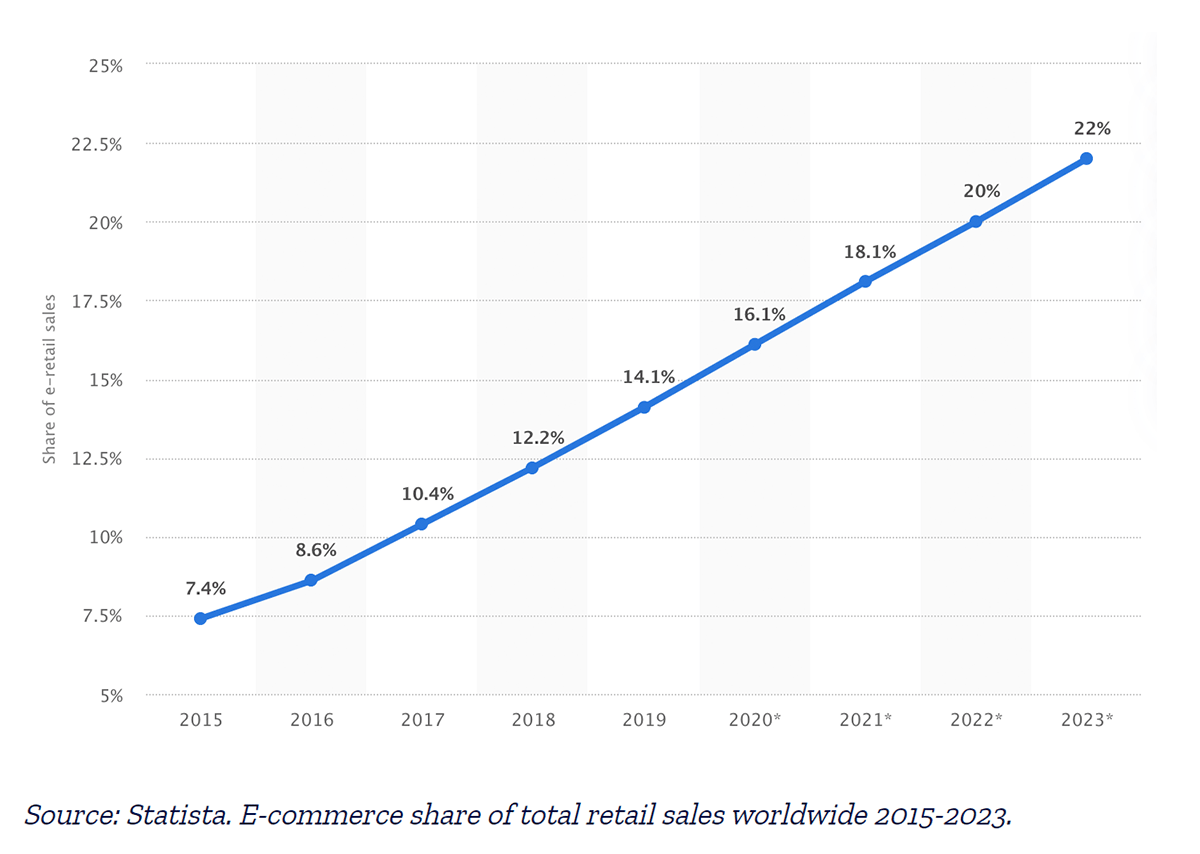
If you’re considering a headless commerce approach for your business, there are a few things to keep in mind. First, it’s essential to choose a headless CMS that provides the flexibility and ease of use you need. Second, you’ll need to ensure that your eCommerce platform integrates seamlessly.
In this guide, we’ll explore:
- What are the key differences between traditional and headless commerce?
- What are the benefits of headless commerce?
- How are our merchants reaping the rewards of headless commerce?
What is headless commerce?
Headless commerce is an eCommerce platform that decouples the front-end experience from the back-end system. This infrastructure allows businesses to build unique, engaging experiences for their customers without being limited by the functionalities of their eCommerce platform. Headless commerce platforms are gaining popularity as companies look for ways to differentiate their online experiences.
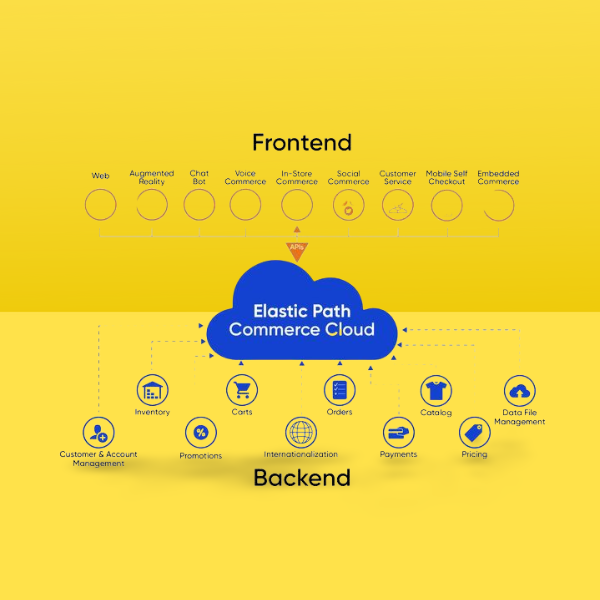
By decoupling the front-end from the back-end, businesses can build custom experiences that are above par with the capabilities of their eCommerce platform. This ecosystem allows businesses to create unique and engaging experiences for their customers.
How to Create Unique User Experiences with Your Ecommerce Platform
As the ecommerce landscape continues to evolve, so must the way we think about creating unique user experiences. Headless commerce is one of this arena’s newest and most exciting developments.
It refers to a decoupled approach to ecommerce, where the back-end platform decouples the front-end experience. It allows for greater flexibility and creativity in terms of how users interact with your ecommerce site or app.
There are listless advantages to this approach, some of which is the ability to:
- Create truly unique user experiences: Without the constraints of a traditional ecommerce platform, you can create custom user experiences for your specific brand and audience.
- Leverage the best-of-breed technologies: You can choose the best tools and technologies for each area by decoupling the front-end and back-end. This technology gives you the freedom to experiment and find the perfect solution for your needs.
- Improve efficiency and speed to market: Headless commerce can help streamline your development process, making it easier and faster to get new features and products to market.
Headless Commerce vs. Traditional Ecommerce
Headless commerce has become a buzzword in the ecommerce industry these days.
What is it?
Headless commerce is a decoupled architecture that separates the back-end systems that power a website or application from the front-end user interface. This technique allows businesses to build unique digital experiences for their customers without being hindered by the limitations of traditional ecommerce platforms.
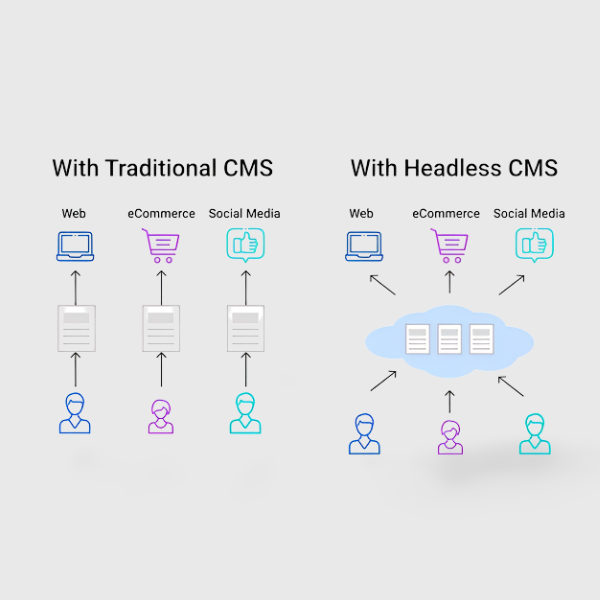
So, what’s the difference between headless commerce and traditional ecommerce? Here are a few key points:
- Flexibility and customization: With headless commerce, businesses have the freedom to build any digital experience they want.
- Improved performance: Because the back-end and front-end are not tightly coupled, headless commerce can improve a website’s or application’s performance.
- Better scalability: Headless commerce is more scalable than traditional ecommerce because businesses can easily add or remove features and functionality without affecting the website’s overall performance or application.
- Increased security: Headless commerce can provide increased protection for a website or application because the back-end systems are not directly accessible from the front end.
Headless Commerce Platform
Benefits:-
Headless commerce is a decoupled approach to eCommerce that enables businesses to develop their online presence using a headless CMS. The website’s front end is not tied to the back-end eCommerce functionality, giving companies more flexibility and agility when developing their online presence.
The headless commerce approach has many benefits, including:
Increased flexibility: A headless commerce approach gives businesses more flexibility in developing their online presence. They can choose any CMS they want to use for the front end of their website, and they are not bound to the back-end eCommerce functionality. As a result, businesses can easily change the look and feel of their website without having to re-platform their eCommerce solution.
Increased agility: A headless commerce approach also enables businesses to be more agile in developing their online presence. They can quickly make changes to their website’s front end without going through a lengthy process of updating the back-end eCommerce functionality. As a result, businesses can roll out new features and functionality much faster than they could with a traditional eCommerce solution.
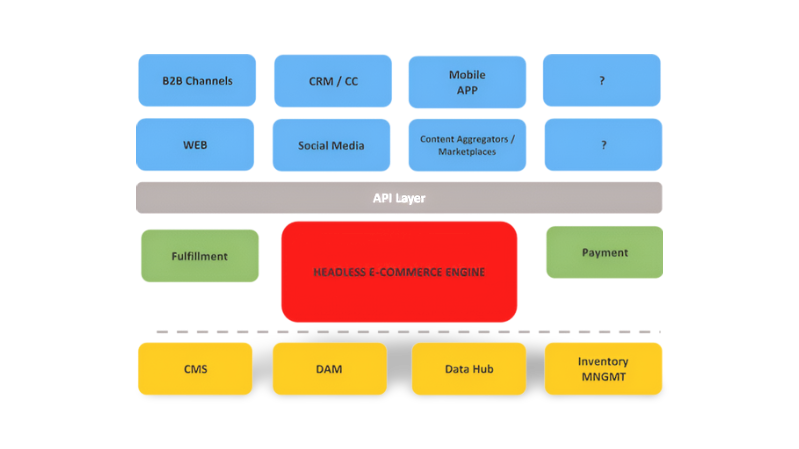
Full-stack technology: Headless commerce is a powerful tool that can benefit businesses. One of the benefits is that companies can decouple their front-end and back-end systems. It can provide several advantages, including the ability to scale and update each system independently and use different technologies for each scenario.
Faster and Responsive: Another critical benefit of headless commerce is that it can make your website faster and more responsive. It is because the front end of your website is not reliant on the back-end systems, which can often be slow.
Excellent user experience: Headless commerce can provide a better user experience for your customers. It is because it allows you to personalize the front end of your website for each customer and provides you with more flexibility when designing your website.
Power your headless commerce with a scalable, microservices–based architecture.
Headless Commerce Use Cases
Headless commerce aims to provide shoppers with a seamless and personalized experience across all channels. For example, BigCommerce Headless Commerce provides the ability to build fast, scalable, and personalized shopping experiences on any channel or device.
Use cases for headless commerce include:
- Creating a unified shopping experience: Headless commerce allows you to decouple the front-end shopping experience from the back-end infrastructure. As a result, you can create a unified shopping experience across all channels, including web, mobile, and voice-activated devices.
- Supporting multiple devices and screen sizes: With headless commerce, you can easily support various devices and screen sizes. In addition, the front-end experience is free from the back-end platform.
- Personalizing the shopping experience: Headless commerce lets you personalize each shopper’s shopping experience. It is possible because you have complete control over the shopper’s data and can use it to create a unique and personalized experience.
- Enabling real-time shopping: Headless commerce allows you to offer a real-time shopping experience. It is possible because the front-end experience is not reliant on the back-end infrastructure.
Headless Commerce Solution
Custom solutions
Headless commerce is the top choice if you’re searching for a custom solution for your eCommerce needs. With headless commerce, the front-end and back-end of your eCommerce platform become a separate entity, giving you the flexibility to build a completely customized experience for your customers.
However, there are a few things to remember when going headless. First, because We decouple the front-end and back-end, you’ll need to ensure that your back-end can support the customizations you want to make on the front end. Second, headless commerce can be more complex to set up and manage than a traditional eCommerce platform, so it’s essential to ensure you have the resources and expertise to support a headless solution.
Headless commerce is an excellent option for a custom eCommerce solution. However, keep the complexity in mind and have the right resources to support your headless solution.
Content Management System (CMS)
A content management system is a whole infrastructure, or ecosystem, to edit, publish and manage digital content.
In a traditional eCommerce setup, the front end (what the customer sees) and the back end (where the product data is managed) remains in pair. It can make it difficult to change the front end without affecting the back end and vice versa.
With headless commerce, the two can be developed and managed independently. As a result, it can make it easier to create a flexible, scalable eCommerce architecture.
There are a few benefits of using a headless commerce setup with a CMS:
- Greater flexibility: You can more easily change the front end. The best thing is without affecting the back end and vice versa with a headless commerce setup. It can give you more flexibility when designing and developing your eCommerce site.
- Scalability: A headless commerce setup can be more scalable than a traditional eCommerce setup. It is because the front-end and back-end can be scaled independently, so you can add more capacity as needed.
WordPress
WordPress is a great content management system to start if you want to build a blog or website. Both ease of use and flexibility- are the specialty of WordPress. While WordPress is an excellent platform for traditional websites and can also be used for headless commerce.
Headless commerce is a fresh and innovative approach to eCommerce that decouples the front-end experience from the back-end systems. It means you can use any platform or framework to develop your front end, as long as it can make API calls to the back end.
The Key benefit of using WordPress for headless commerce is that it’s a viral platform, so you can find a large community of developers and designers that you can tap into. Also, WordPress is open source, so it’s easy to customize and extend.
If you’re considering using WordPress for headless commerce, there are a few things to keep in mind:
- You’ll need to ensure that your WordPress installation is up to date.
- You’ll need to install a plugin or two to enable the headless commerce functionality.
- You’ll need to develop your front-end experience.
Contentful
If you’re striving for a powerful and flexible content management system; you’ll want to check out Contentful. With Contentful, you can easily manage your content and commerce in one place – making it perfect for headless commerce.
Contentful provides all the tools you need to easily manage your content, including a robust API that makes it easy to connect your content to your commerce platform. Plus, with Contentful’s built-in eCommerce features, you can easily manage your orders, customers, and inventory – all in one place.
Contentful is the perfect platform for headless commerce because it gives you the flexibility to manage your content and commerce in one place. With Contentful, you can easily connect your content to your commerce platform and manage your orders, customers, and inventory in one place.
Prismic
In eCommerce, businesses are always looking for ways to stay ahead of the competition. One way to do this is to adopt a headless commerce approach. It means decoupling the front end of your eCommerce store from the back end, allowing you to create a more flexible and scalable platform.
There are many benefits to using a headless commerce platform, such as integrating easily with third-party applications and services. In addition, it can give you a competitive edge by allowing you to quickly add new features and functionality to your store.
Another benefit of headless commerce is that it can make your eCommerce store more responsive and faster. Again, it is because the weight of the back end does not bog down the front end of your store.
If you’re looking for a headless commerce platform that is both flexible and scalable, Prismic is an excellent option. Prismic is a content management system (CMS) designed to work with headless commerce platforms. It provides:
- A simple way to manage your content.
- Easily add and update products.
- Categories.
- Other information on your store.
Prismic also offers a robust API that allows you to integrate it with other applications and services efficiently.
Uncover compelling reasons to go with ‘Headless PWA’
in your eCommerce Journeys
Contentstack
Based on the Headless content management system (CMS) approach, Contentstack enables developers to create, manage, and publish content in any format, including websites, mobile apps, and intelligent devices.
Contentstack with Headless Commerce is a powerful combination of Contentstack and a headless commerce platform that enables businesses to create and manage their content and product catalogs in one centralized system. It allows companies to manage their content and product catalogs in a single system, making it easier to keep track of their inventory and product offerings. It also allows businesses to publish their content and products to various channels, including their website, mobile apps, and intelligent devices.
The benefits of using Contentstack with Headless Commerce are many, but some of the most notable include:
- Increased efficiency and productivity: Managing your content and product catalogs in a single system saves you time and increases your efficiency.
- Greater control over your content and products: With Contentstack, you have complete control over your content and products. You can decide how and where they are published and change them at any time.
Digital Experience Platform (DXP)
A digital experience platform (DXP) is a Content Management System (CMS) with added functionality to manage digital customer experiences. A DXP allows enterprises to create, manage, and deliver large-scale digital customer experiences. A digital experience platform is composed of a content management system (CMS), a digital asset management system (DAMS), a customer relationship management system (CRM), and an eCommerce platform.
A headless commerce system is an eCommerce platform that decouples the back-end commerce functionality from the front-end presentation layer. As a result, it allows for greater flexibility and customization of the front-end experience while leveraging the back-end’s robust commerce functionality.
Combining DXPs with headless commerce allows enterprises to create highly customized digital experiences for their customers while taking advantage of the robust back-end functionality of the eCommerce platform.
Using a DXP with headless commerce benefits include increased flexibility and customization. With a headless commerce system, enterprises can create highly customized digital experiences without being limited by the functionality of the back-end eCommerce platform.
Bloomreach
In a rapidly developing world, it is becoming increasingly difficult for businesses to keep up with the competition. Thus, more and more companies are joining the list of headless commerce to stay ahead of the curve. Headless commerce allows businesses to decouple their front end from their back end, giving them the flexibility to develop their website or app without being hindered by their eCommerce platform.
Bloomreach is a headless commerce solution that provides businesses with the tools they need to create a seamless omnichannel experience for their customers. With Bloomreach, businesses can easily connect their back-end systems to any front-end, allowing them to create a stunning and personalized experience for their customers.
Uniform
Uniform DXP can take your digital experience to the next level. A Uniform DXP is a complete, end-to-end platform that provides everything you need to create, manage, and deliver a seamless digital experience. With a Uniform DXP, you can easily connect your digital touchpoints, from your website and mobile apps, to your IoT devices and physical stores. Plus, you can use the same platform to power your omnichannel strategy, giving your customers a consistent experience across all channels.
But the benefits of a Uniform DXP don’t stop there. A Uniform DXP can also help you:
- To provide a personalized experience for each customer
- Increased conversion rates and average order values
- Increase customer engagement and loyalty
- Maximize efficiency and reduce costs
Amplience
Amplience is the perfect platform for powering headless commerce experiences.
A cloud-based content management system (CMS) makes it easy to create and manage digital content at scale. With Amplience, you can easily create and manage rich media content (such as images, videos, and 360-degree product views). In addition, its integration into your headless commerce platform is seamless.
Progressive Web Apps (PWA)
Progressive enhancement principles are the backbone of Progressive Web Apps, web applications built using x. They are web app that uses modern web technologies to provide a user experience similar to a native app.
Progressive Web Apps are fast, reliable, and engaging. They are built using web technologies that allow them to be progressive – meaning they belong to advance and new features.
The best feature of Progressive Web Apps is that we can use them without an internet connection. Service Workers make it possible for Progressive Web Apps, which allow them to cache content and continue to work offline.
Another critical feature of Progressive Web Apps is that they can be installed on a device like a native app. It allows users to have an app-like experience without going through an app store.
There are many reasons to use Progressive Web Apps, but one of the main reasons is that they offer a better user experience. In addition, Progressive Web Apps are fast, reliable, and engaging – meaning they are more likely to keep users returning.
Vue Storefront
Vue Storefront is an open-source project for building eCommerce front-ends. It is based on Vue.js and provides out-of-the-box support for major eCommerce platforms such as Magento, Shopify, BigCommerce, and more.
The origin of Vue Storefront lies in making it easy for developers to build fast and responsive eCommerce front-ends. It provides a great development experience and a rich set of features that make it easy to build eCommerce applications.
One of the great things about Vue Storefront is that it is very modular. It means you can choose which features you want to use in your application. It makes it very flexible and allows you to create custom eCommerce applications accustomed to your needs.
Another great thing about Vue Storefront is that it is swift. It uses a unique server-side rendering technique much faster than traditional eCommerce front-ends. As a result, it makes it ideal for businesses that need a fast and responsive user experience.
Vue Storefront is a great option for developers who want to build fast and responsive eCommerce front-ends. It is standard and allows you to pick and choose which features you want to implement.
Next.js
Next.js is a great way to build server-rendered React applications. It’s simple to start and provides all the necessary features to build production-ready applications. Plus, it’s easy to extend and customize if you need to.
If you’re looking for a way to build fast, reliable, and scalable React applications, Next.js is the way to go.
Gatsby
Gatsby is a great way to build static websites with React. It includes many features you would expect from a modern static site generator, like a plugin system, asset bundling, and code splitting. And, since it uses React, you can easily add dynamic content to your site.
If you’re searching for a static site generator to make your life easier, Gatsby is worth checking out.
Wrapping Up
Headless commerce is a new way of thinking about eCommerce architecture. It allows for greater flexibility and scalability by decoupling the front-end presentation layer from the back-end commerce layer. Furthermore, the same back-end commerce platform can power multiple different front-ends, whether native mobile apps, voice-activated assistants, or even AR/VR experiences. This approach provides a lot of benefits for both merchants and customers alike.
For merchants, headless commerce provides the ability to create unique shopping experiences quickly and can be tailored to specific customer needs. As a result, it led to increased revenues and conversions. In addition, headless commerce provides customers with a more personalized and engaging shopping experience across multiple devices and platforms.
The future of ecommerce is headless commerce. This type of commerce allows businesses to decouple their front end from their back end, allowing them to change their front end without affecting their back end. In addition, it will enable companies to experiment with different front-ends and find the one that works best for them.
Headless commerce will also allow businesses to personalize their shopping experience for their customers. This type of commerce is the future wave, and companies that don’t adopt it will be left behind.
Overall, headless commerce is a fascinating new development in the eCommerce space. It has the potential to revolutionize the way businesses operate and the way customers shop. However, this is just the start of what is possible with this new approach to eCommerce.
FAQs About Headless Ecommerce
Headless ecommerce is a type of ecommerce-architecture that decouples the front-end experience from the back-end systems that power it. It allows businesses to build ecommerce experiences using any technology they want without being limited by the capabilities of their ecommerce platform.
Some headless CMSs may be a good fit for certain eCommerce businesses, while other CMS may not be as well suited. Ultimately, it is crucial to evaluate the needs of the eCommerce business and select a headless CMS that is a good fit for those needs.
The benefits of headless ecommerce include the ability to: – Build ecommerce experiences using any technology – Deliver a better customer experience by decoupling the front-end from the back-end – Improve performance and scalability – Reduce the cost of development and maintenance.
The challenges of headless ecommerce include: – Managing multiple technology platforms – Ensuring data consistency between the front-end and back-end – Debugging and troubleshooting issues – Managing deployments and updates.
There are a few key reasons why headless commerce is becoming increasingly popular and seen as the future of eCommerce.
- Firstly, it enables businesses to decouple their front-end and back-end systems, allowing them to build and deploy their front end faster and more efficiently. It is because they are not restricted by the limitations of traditional eCommerce platforms, which can often be slow and inflexible.
- Secondly, it gives businesses greater flexibility and control over their user experience. With a headless commerce platform, companies can build custom experiences for their users without being restricted by their platform.
- Lastly, it allows businesses to take advantage of the latest technologies and trends. For example, with headless commerce, companies can easily integrate with voice-activated devices such as Amazon Echo and Google Home.
- Overall, headless commerce provides businesses with several benefits, making it the ideal choice for companies looking to stay ahead of the curve.
The three approaches for implementing a headless content delivery are:
- Content management system (CMS) using headless
- Headless framework, and
- The Headless eCommerce platform
The term “headless” is trending because it is a new way to build websites and applications. Instead of using a standard web browser, a headless browser is used to render the content. It allows for a more efficient way of building websites and applications.
Do you have More Questions?
We’re here to help! To learn more about headless eCommerce, read our blog. We love to talk about all things eCommerce. Then, connect with us on Twitter and LinkedIn. You can also subscribe to our blog to stay up to date on the latest news and insights.
